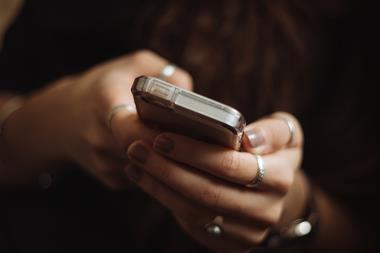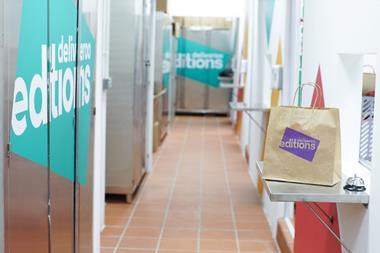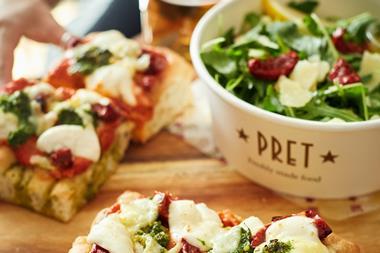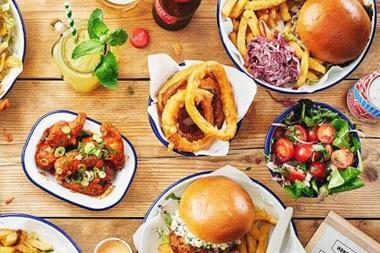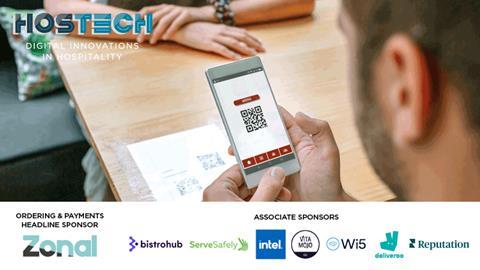
At the end of 2019, if a customer wanted to order and pay for their food using their mobile phone the number of restaurants in which they could do this would have been relatively small. Fast forward to this year and, once lockdown is lifted, the number of places offering digital order and pay will be significantly bigger.
“Pre Covid that was an uphill struggle, a lot of hospitality businesses said they can see the benefits but that it will never work,” says Nick Popovici, CEO of Vita Mojo, which provides an omni channel digital order experience to the hospitality sector.
“There were mental blocks against change. Then Covid came and it was adapt or die, and the ones that adapted did really well.”
According to Popovici, it was only a matter of time before restaurants joined the digital revolution based on what was happening in other sectors, although Covid eventually proved to be the catalyst for change. “We’ve had sectors being improved through digitisation whether it’s how you get a taxi, how you consumer music or movies.”
Changing habits
Changing consumer habits have helped with the transition to digital. According to Lumina Intelligence’s latest report The role of Technology in Hospitality, specially commissioned for Hostech, prior to the Coronavirus, consumers were most likely to use takeaway apps such as Deliveroo and Just Eat.
The pandemic has accelerated the use of QR codes and restaurant branded/mobile order and pay apps in particular. Its report shows that more than a quarter of consumer (25.9%) used a QR code after the first lockdown compared to just 10% before lockdown, and 26.4% of people have used a mobile pay and order app after March compared with 15% before it.
Last November’s Go Technology Report - put together by analyst CGA on behalf of POS company Zonal - also shows that consumers have become increasingly comfortably with mobile tech.
Usage has doubled as a result of the pandemic - with many restaurants forced to introduce digital ordering and payments in order to offer a safe dine-in experience - with 43% of consumers now saying they typically use technology to pay for food and drink.
Perhaps unsurprisingly, younger adults are more engaged. Nearly two thirds of 18 to 34 year-olds say they have used order and pay solutions since lockdown but the number tails off significantly among older groups: only 20% of those over 65% have used them, for example.
Encouragingly for tech-savvy operators, the Go Technology Report also found that 76% of those surveyed are satisfied with the ease of ordering from digital solutions. Furthermore, 40% feel safer in venues that use mobile tech, which Zonal says demonstrates how it has been an important tool in operators’ efforts to give people the confidence to eat and drink out during the pandemic.
“Operators are seeking to minimise touchpoints,” says Zonal group product director Alison Vasey. “But it’s also down to a realisation that most customers now do everything through their mobile phones.”
Crave Interactive, which creates digital service solutions for hospitality businesses, supports the view that customer are now much more willing to embrace order and pay technology.
“Guests are enjoying the convenience,” says COO Nick Pledge. “Interestingly, operators believe their ability to provide good customer service has decreased during the pandemic, but customers think the opposite. That’s largely due to the explosion of order and pay technology.”
As well as benefits to customers, order and payment apps can provide financial benefits to operators. Vita Mojo’s Nick Popovici says that customers spend typically 15% more per order when ordering through a digital interface than via a waiter or cashier.
“That is a tremendous benefit. People can grow their sales by 15% overall. Imagine you are Nando’s [one of Vita Mojo’s restaurant partners] with 450 locations throughout the UK, that is more than £100m extra straight onto the bottom line.”
Zonal’s Vasey says its clients are reporting a similar rise in average spend. “People are more likely to have that sneaky side when they’re not ordering face-to-face.”
Sushi restaurant group YO! has seen other benefits. While before the company would make dishes in advance that would then circulate on the conveyor belt for customers to choose, using Vita Mojo it has combined its order and pay systems with its new conveyor belts, with food now only being prepared once it has been ordered and then being delivered directly to the customer. “Food wastage has gone down because we are now only producing food that we need,” says YO! managing director Emma Deabill.
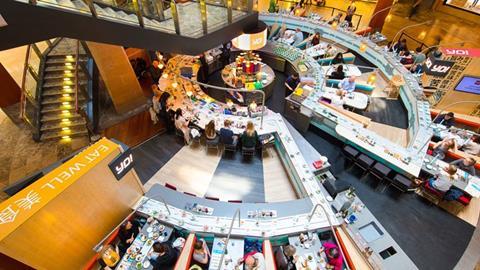
Customisation
While in the early days of mobile payments customers were encouraged to download a branded app, the past year has seen the resurgence of QR codes that can be scanned by the user when in a restaurant and which give order and pay functionality tailored to each individual restaurant. This approach has proven to be particularly popular given the glut of restaurants that switched to digital menus on reopening after the first lockdown.
“Half of consumers agree downloading an app is a barrier, solutions with QR codes are the drivers in using the technology,” says Greta Glaveckaite, citing Lumina data.
Companies including Crave, Vita Mojo and Wi5 instead create white label products that use QR codes and which are browser based, meaning that customers don’t need to download different apps for different restaurants.
“There’s no app to download. We see that as a massive barrier,” says Pledge. “It’s a big dividing line in the industry and we are fervently of the opinion that a web app or PWA (progressive web app) is the way to go because it gives people instant access.”
Prask Sutton says that Wi5 is browser based to provide an experience that is as frictionless as possible. “People don’t need to create an account or download an app,” he agrees.
“Our strategy at Wi5 is to have as fewer barriers as possible to get the maximum number of people to engage with the technology. It’s very hard to get people to download an app, especially for a one-off or impulse-driven visit or purchase. “It’s a big ask. Die-hard fans may have the app for their favourite places, but most people don’t. Younger audiences in particular don’t want to have a phone filled with all sorts of different apps.”
In the past year, Zonal has also built an order and pay website, which offers comparable functionality to the order and pay app without the need to download anything.
While most payment solutions are pay as you go, a number of providers offer or are experimenting with systems that run along more traditional lines by running a tab that customers settle at the end. This has the potential to make order and payment in higher-end restaurants and bars in which guests would expect to pay at the end.
The big advantage of this is that a single payment means lower processing fees. The challenge for operators and technology customers is working out a way to ensure people definitely do settle up.
“It’s awkward,” says Pledge. “One of the big advantages of mobile ordering and payments is that you don’t have to worry about customers walking off without paying. We’re mainly in pubs and bars where customers are used to paying for things before they have received them and the majority of transactions are for rounds, so our average order value is over £20.”
Azzurri which operates the Zizzi and Ask Italian restaurant brands, for example, has developed its own order and pay app partly because it wanted an app that Holmes says best replicated the Azzurri experience. “You can pay at the end or at any point in our app whereas with a lot of apps you pay as you order,” he says.
“We didn’t want that; we wanted our tech journey to represent our customer journey.”
QSR leading the way
Mobile order and payments may be becoming more prevalent in the casual dining sector, but those in the QSR space, such as the fast food giants, have been turning to self-service kiosks and drive-thrus to improve and heighten the customer experience. McDonald’s, in particular, has led the way in self-service kiosks but has since been joined by other groups, including Leon.
Pyramid Computer, the German-based company that supplies kiosks to a number of fast food brands including McDonald’s, says that some of its customers are even seeing a 60% rise in average customer spend compared to using a cashier.
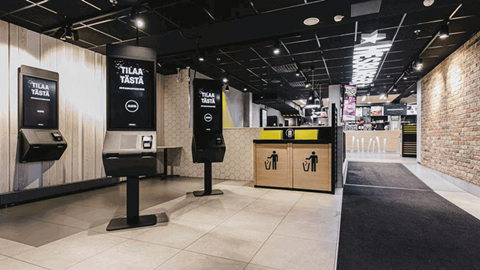
Pyramid’s kiosks are powered by Intel Core processors, which Intel says enables them to do more than just take customer orders and payments. “Intel is involved in many of restaurant operations,” say Farhaan Mohideen, product strategy and IOT spokesperson at Intel.
“Wherever you see kitchen screens, menu boards, kiosk and drive-thus our technology is there.”
The company creates references to show its end partners which they can then use to go and build an end-to-end solution. “Companies will look at how we’ve used technology to solve certain problems so that’s where Intel is important. We are showing them some of the accelerators we’ve used and some of the hardware and software in order to create the solution - we look at devices like POS, signage and kiosks. We are creating an ecosystem that solves real business problems, getting the solution and bringing them to market.”
One such innovation is touchless kiosks. With concerns over the hygiene of touch screen kiosks in QSR restaurants, with staff having to be on hand to clean them after every use during the pandemic, Intel is working with kiosk provider Acrelec to bring a touchless one to the market.
It is looking at installing depth cameras in the kiosks that sense when someone is making hand movements, meaning that dishes can be chosen by customers simply hovering their hand over a selection rather than pressing a screen.
Intel is also working on similar technology for drive-thrus, where cameras can identify the number of cars waiting and try and regulate them automatically. “If you can make sure the queue is no longer than three cars it will make it easier for a customer to make a decision to join the queue,” says Mohideen.
Future advancements
At present many hospitality businesses taking their first tentative steps into customer-facing digitisation are doing so to simplifying how customers order and pay for food, but as acceptance grows among both businesses and customers so does the potential for the technology to go well beyond that.
The onset of the pandemic has helped to normalise the use of technology in the restaurant environment, opening the door to further technological developments, including having fully automated restaurants, creating fully bespoke menus for regular customers and introducing things such as dynamic pricing, where prices change in relation to external factors such as time, weather and environment.
One key area where tech companies believe more developments will occur is with personalisation, with mobile ordering technology generating real-time menus that are updated to reflect any dishes that might be unavailable or even to change to reflect certain times of day.
Allergen information can also be automatically taken into account for individual customers, with them only being given menus comprising dishes that they can safely eat. According to Lumina research, 60% of consumers are willing to receive personalised food offers based on their previous experiences.
Some solution providers are starting to experiment with open banking - processing account-to-account payments that circumnavigate card scheme fees. The funds leave the customer’s account and go straight into the operator’s account. Fees are lower, but according to Wi5’s Prask Sutton the infrastructure is not quite there yet.
“There are big upsides, but we don’t feel that the experience is frictionless enough at the moment. It’s not quite the right time to launch it.”
Crave Interactive’s Nick Pledge, meanwhile, believes that NFC - the technology that drives contactless - is likely to take over from QR codes soon.
“QR codes have made a comeback and work very well indeed. While opening up a phone’s camera and scanning something is not difficult, near field communication technology could make things even more seamless,” he says.
Customers would simply tap a small, unpowered chip on a menu or embedded into a table and be instantly taken to a website. The biggest barrier at the moment is that Apple does not currently allow third parties to make use of its phones’ NFC functionality, but this is likely to change soon.
The pandemic has seen cash payments drop significantly and Zonal’s Alison Vasey predicts a gradual move away from PDQ machines too. “Ideally the only thing that a customer touches is the tableware. Raising the contactless limit from £30 to £45 has helped, though.”
In the future mobile order and pay systems could even make the leap from casual dining to more upmarket venues. While many chef restaurateurs currently find it difficult to see how such technology could work in a fine dining setting such technology can still have a place in the upper echelons of restaurants, provided it is used sensitively and intuitively.
“I love food and drink and there are of course certain restaurants you go to where someone coming to the table and talking to you in detail about what’s on offer is a big part of the experience,” says Sutton.
“Technology should not be trying to replicate that. But there are scenarios were someone coming to the table to offer - for example - another drink - isn’t adding anything to the experience. It doesn’t have to be strictly one or the other - there is scope for hybridisation of the old and the new.”
Register your details on our dedicated Hostech website to receive a weekly roundup of content, including our free tech guides.
Sign-up for our two free webinars, must-attend events for those tasked with driving efficiencies and encouraging loyalty in a tough trading climate.
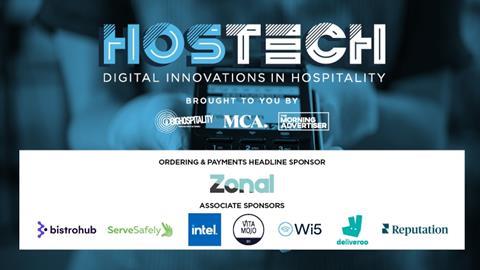
Precis
How technology is revolutionising the post-pandemic restaurant sector
At the end of 2019, if a customer wanted to order and pay for their food using their mobile phone, the number of restaurants in which they could do this would have been relatively small. Fast forward to this year and, once lockdown is lifted, the number of places offering digital order and pay will be significantly bigger. While it was only a matter of time before restaurants joined the digital revolution, based on what was happening in other sectors, covid eventually proved to be the catalyst for change. In this special feature for Hosetch 2021, Stefan Chomka speaks to Vita Mojo, Lumina Intelligence, Zonal, Intel and YO! about the dynamics behind this technological shift, and what it means for the future shape of the industry































